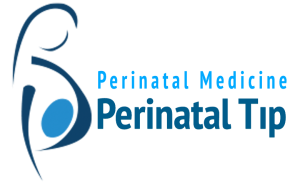
Genetic Disorders
 Genetic information is to provide information about the course of the disease and treatment methods, recurrence risks and solutions to people who have or are at risk of carrying a hereditary disease, and to their relatives.
Genetic information is to provide information about the course of the disease and treatment methods, recurrence risks and solutions to people who have or are at risk of carrying a hereditary disease, and to their relatives.
Genetic information is to provide information about the course of the disease and treatment methods, recurrence risks and solutions to people who have or are at risk of carrying a hereditary disease, and to their relatives. The informant may be a perinatologist or geneticist. The primary task is to accurately and completely convey the information about the disease discussed to the family and to offer solutions. Therefore, it should never be a guide. On the contrary, all information should be explained in a way that the person or people can understand and the decision should be made by the relevant people.
Genetic Information Indications
Carrier of a genetic or inherited disease or disease
– Single gene diseases
– Chromosomal disorders
– Multifactorial diseases
– Mitochondrial diseases
Finding a child or children with a genetic disease
– One or more malformations
– Developmental delay and short stature
– Sex development anomalies
– Mental retardation recurrent pregnancy loss
Encounter with a teratogenic agent
Advanced maternal age (≥35)
Kinship
infertility
Detection of problems in the baby during pregnancy
Before genetic information, the diagnosis of the disease must be finalized. Therefore, a detailed family history should be taken by a geneticist and a family tree should be drawn. If the sick person is a child, the parents of the sick person must be found during the taking of the family history and the extraction of the family tree, and the information should be obtained directly from the parents themselves. Sick children and family members should be examined. Many analyzes such as chromosome analysis, DNA analysis, enzyme levels may be needed in order to identify the disease or in cases where the disease is defined but the inheritance pattern cannot be determined.
After these procedures, if the disease is diagnosed or a genetic cause is determined, the family is informed about the problems that may be caused by the disease, its consequences, the risks in new pregnancies, and what to do before and after pregnancy. The risks detected after these procedures can vary from the absence of the risk of recurrence in the new pregnancies of the couples to the risk of all their children being born sick. If the inheritance pattern of the disease is determined in families with no diagnosis, information about the risk of recurrence can be given to the family.
Disease Types and Genetic Information
Single gene diseases, chromosomal diseases, multifactorial diseases, trinucleotide repeat diseases and mitochondrial diseases cover most of the diseases that require genetic information. Genetic information gains importance in families with a child or children in whom one or more of the findings such as multiple congenital malformations, mental retardation, developmental delay and gender anomalies were detected before. In addition, couples with recurrent pregnancy loss, exposure to teratogens during pregnancy or pathology detected in ultrasonographic examination, advanced maternal age, consanguineous marriage and infertility are also conditions that require genetic information.